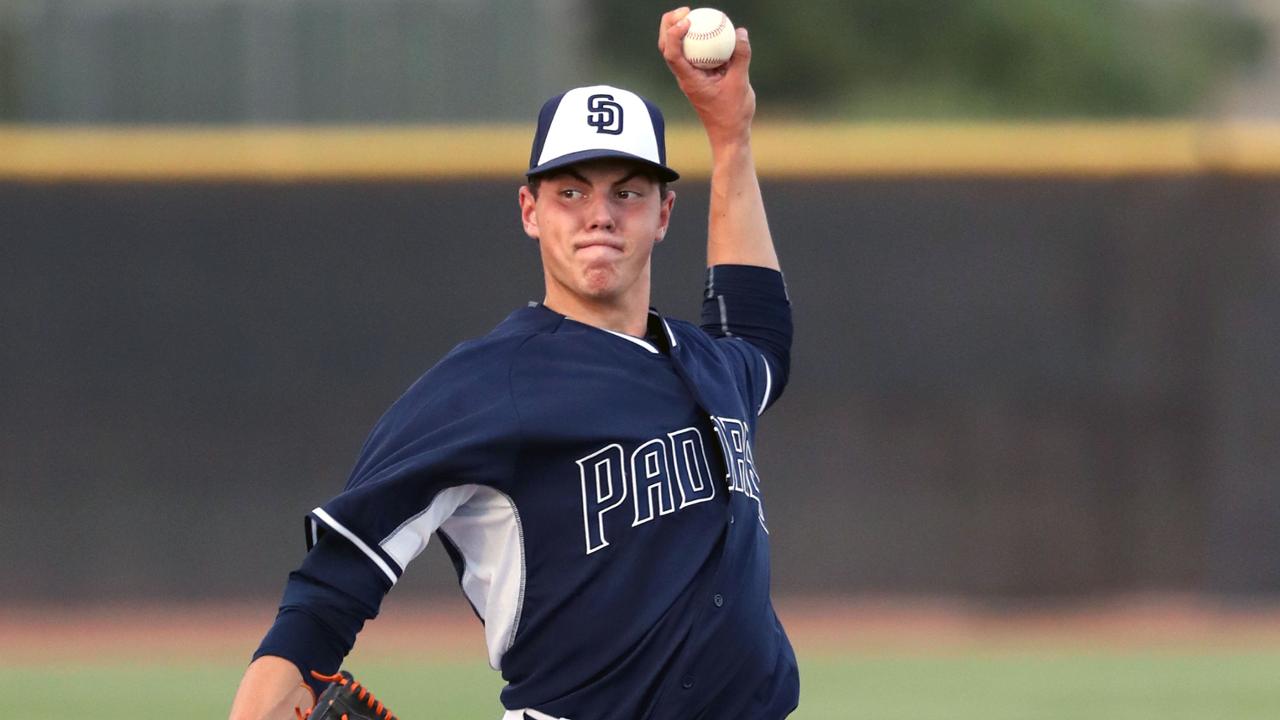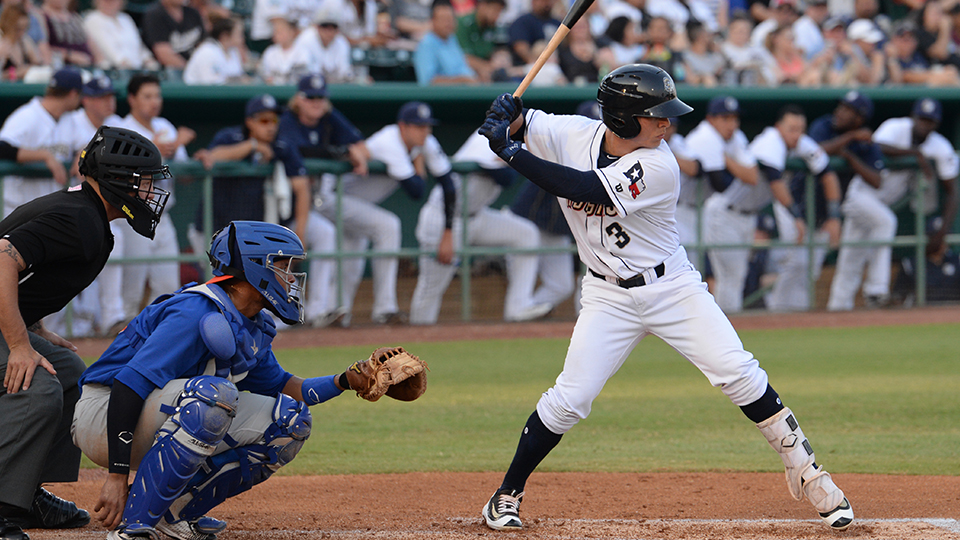Padres Forecast: How Long Does It Usually Take for Top Prospects To Arrive?

Credit: Ryan Cox

Padres Prospect Timetable
Obviously each prospect is different. Nevertheless, let’s take the numbers I found and apply them to some of the top prospects the Padres boast.
Fernando Tatis Jr. falls into that category of international signings. He was signed by the White Sox in July of 2015. The average for his category was 3.6 years, and he may hit that right on the head. There is a chance he could be in a Padres uniform sometime in 2018, most likely in September when the rosters expand and his service time would not get dinged a year. If he gets called up in September, that would be just over three years.
Arrival based on averages: September 2018
Although Tatis is the only Padres player currently on a top 10 prospect list, we will look at the Padres’ prospects that cracked this year’s top 100 (Baseball America).
Mackenzie Gore might be the prospect fans are looking forward to after Tatis. He certainly is getting the highest praise. Gore was drafted last year, third overall. The average for drafted players, as mentioned, was 2.6 years and pitchers at 2.4. That would put Gore at making his debut towards the end of the 2019 season. That is certainly possible. He has done nothing but impress since becoming a pro. That would be quite the ascension up the farm system as he only pitched in Rookie ball last year. He has gotten a few Cole Hamels, and even Clayton Kershaw comparisons. Kershaw made it to the league in just two years, Hamels in four.
Arrival based on averages: September 2019
Luis Urias also is under the international signing category. The Padres signed him out of Mexico in December of 2013. Like Tatis, if he impresses, he too could find himself in a Padres uniform before the end of this coming season. This would be five years since his signing, which is headed towards the slower end of the average. However, being 20 years old, he certainly has time and room to grow, and many fine international ballplayers took upwards of five or six years to make it. He has done nothing but hit at each level (.310 career average in four minor league seasons). I predict Urias will be in San Diego before September is over.
Arrival based on averages: Summer 2017

Prediction: Summer 2018
Cal Quantrill is a bit of mystery, given the fact he was coming off of Tommy John surgery when the Padres drafted him in 2016. Looking at the same averages as Gore, Quantrill’s time could be coming. As have Urias and Tatis, Quantrill has been invited to major league camp. If he hits the average time, he would also be a September call-up. He may be a Padre sooner than that. It will be two years since his drafting this summer, which is right around where pitchers of his caliber start making their debuts. The only question is, how will he hold up after his first full professional season?
Arrival based on averages: September 2018
Michel Baez burst onto the scene in 2017, his first year as a professional. He was signed in December of 2016 out of Cuba. He reached Single-A and may climb faster in 2018. Since the average is 3.6, I would predict Baez goes on the faster side. With his 89 strikeouts to just 10 walks and a 2.54 ERA, I think that is a safe bet.
Arrival based on averages: Summer 2020
Prediction: Summer 2019
Adrian Morejon has shot up the boards as well. He, too, was signed out of Cuba in 2016, but in July. In his first professional season, he made it up to Single-A Fort Wayne and posted a 4.23 ERA in six starts there. He had a 3.86 ERA in 13 total games. He seems mature beyond his soon-to-be 19-year-old peers. With just 63 professional innings under his belt, there are a lot of unknowns. He is on a good path. It’s a bit harder to project international signings.
Arrival based on averages: April 2020
Prediction: September 2019
Native of Escondido, CA. Lived in San Diego area for 20 years. Padres fan since childhood (mid-90s). I have been writing since 2014. I currently live near Seattle, WA and am married to a Seattle sports girl. I wore #19 on my high school baseball team for Tony Gwynn. I am a stats and sports history nerd. I attended BYU on the Idaho campus. I also love Star Wars.
I think we as an organization can do a better job of getting our prospects ready to succeed once they get to San Diego. I look at the Dodgers, Yankees, and Red Sox as teams that have had great success with developing great young players who then form a strong nucleus for many years.
I don’t think we want to rush any of the arms we have currently in A ball till we have given the more advanced arms a shot. The value of the first wave will be discounted if they are not given time to produce first. We have 10 total arms with rotation projections in the minors, you only have 5 spots available which means we will maybe drop a couple into the bullpen but you will need to trade 3 or more. WE need to develop those trade chips also, because not every position player prospect is going to turn out the way we need them to. IMO, our system is very weak on LH hitters, and high average, high OBP, with power types who play on the corners (LF, RF, 1B, 3B). I hope we start addressing that need with this years draft.
EVERYTHING has to go perfectly for Gore to make his debut in 2019. 2020 is more likely
I agree a lot needs to go right for Gore. But it’s not totally out of the question. Lots of top lefty pitching prospects soar through the minors. It might depend on where the Padres are at in 2019. If they are in the hunt, they might bring him up.